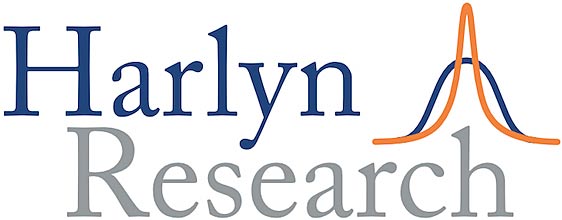Our flagship product, called Synopsis, is published every two weeks. It uses the data generated by our process to address whatever we think are the most important issues in global investing at the time.
All our notes are tagged thematically, so feel free to click on any of the topics and explore what we have written.
Under UK regulations, our research is only available to professional clients and eligible counterparties; they are not available to retail (investment) clients. Harlyn Research is not registered as an investment advisor with the SEC and therefore any information about our investment products or services is not directed at nor intended for US investors.
So Much Choice
Friday, February 4th, 2022The opposite to US growth is not US value
If investors decide to get out of the growth style in the US, there are several other strategies they can follow apart from US value: (1) low volatility in US equities; (2) growth in non-US equities; (3) low volatility in other US asset classes; (4) non-US value. The problem with the value style is that cheap stocks tend to stay cheap, unless there is a clear and obvious catalyst for them to outperform, like a massive earnings surprise (as in Energy) or a surge in corporate activity (which may happen in the UK). We think the most popular destination for flows out of US growth will be low volatility in US equities, into sectors such as Consumer Staples and, possibly, Utilities.
PURCHASE ALL ACCESS PASS
Already hold an All Access Pass? LOG IN
No Limits
Friday, January 21st, 2022Scope for equity position sizes to get much larger
The start to 2022 feels so hectic partly because the end of 2021 was so boring. The active weight in our sector models – our proxy for the risk appetite of equity investors – was at multi-year lows all through December. We think it is now close to bottom and there is no technical reason why it could not rise strongly in coming weeks. An increase of 40% in position size would only take us back to bottom of the top quartile in terms of risk-budget utilisation. We also think that the narrative of rotating from growth to value is a little simplistic. Many of these moves can be explained simply by looking at changes in estimate momentum.
PURCHASE ALL ACCESS PASS
Already hold an All Access Pass? LOG IN
Groundhog Day for Value
Friday, January 7th, 2022Everything depends on the slope of the yield curve
We see lots of commentary suggesting that the value style is going to outperform the growth style in Europe and the US. We also see this being used as a reason for rebalancing global equity portfolios away from the US and towards Europe. We disagree with both ideas and also with the big idea behind them, which is that government yield curves are going to shift higher and/or steepen at the same time. Indeed, the recent behaviour of US Financials suggests that investors are becoming concerned about the yield curve inverting over the medium term. We also think that the new emphasis on ESG guidelines makes the value/growth trade much more complex than it used to be.
PURCHASE ALL ACCESS PASS
Already hold an All Access Pass? LOG IN
Approaching a Turn in USD
Friday, December 10th, 2021The consensus for a strong dollar is more fragile than it appears
PURCHASE ALL ACCESS PASS
Already hold an All Access Pass? LOG IN
Approaching a Turn in USD
Friday, December 10th, 2021The consensus for a strong dollar is more fragile than it appears
PURCHASE ALL ACCESS PASS
Already hold an All Access Pass? LOG IN
Approaching a Turn in USD
Friday, December 10th, 2021The consensus for a strong dollar is more fragile than it appears
Our asset allocation models have been significantly dislocated by the strength of the US dollar. Our previous note – Currency First Is Second Best – showed that we had a model for working round the problem, even if it was difficult to know when to use it. This note introduces our G7 currency model, which we have been live-running for about two years. We don’t use it to make trade recommendations because we think the risk-adjusted returns are normally unattractive compared to those in other models, but it is occasionally useful in times of extreme market stress. The model itself is based on a mean-reversion approach and it is now close to its largest underweight position in USD over the last two years. This time last year, it was close to a two-year maximum overweight, when the consensus view was the dollar would be weak in 2021. If we were forced to commit capital, we would position for a weaker USD, but we think the right time to do this is January, not December.
PURCHASE ALL ACCESS PASS
Already hold an All Access Pass? LOG IN
Time for Some Bottom-Fishing
Friday, November 26th, 2021Chinese Technology could lead a rally in EM Equities
We spend a lot of our time dissuading clients from going bottom-fishing, mainly because it doesn’t work very well. But there are times when we may need to do it to protect ourselves from the risk of being underweight a sector or country which rallies very fast. This week we highlight a combination of charts (EM Equities and China vs the World and Chinese Technology vs China) which have all sent recent signals suggesting that we may need to close our underweight positions in a hurry. There is a risk/opportunity that Chinese Technology could lead sharp and unexpected rally in EM Equities.
PURCHASE ALL ACCESS PASS
Already hold an All Access Pass? LOG IN
The Roundabout Accelerates
Friday, November 12th, 2021Global equities are about to start rotating faster than usual
We expect global equities to start rotating faster than usual on a country/regional basis. We discuss the technical rationale in some detail, but the important message is that this not about the recent winners such as the US and India, or the losers like China and Korea, but all the others, which are somewhere in the middle. There are several European countries like Germany, the Netherlands and Sweden, which are at risk of dropping down the ranking, while selected EM countries in Asia and Latin America could benefit. If our analysis is correct, this should happen before Christmas.
PURCHASE ALL ACCESS PASS
Already hold an All Access Pass? LOG IN
Adding REITs to the Mix
Friday, October 29th, 2021Works well but the downside needs to be managed
There is lots of client interest in alternative asset classes, mainly because bonds no longer provide enough income and because they are structurally vulnerable to inflation. This week, we demonstrate this it is possible to generate superior long-term returns by adding REITs to an actively managed portfolio of equities and bonds. The key messages are (1) that the combined portfolio needs to be actively and systematically traded and (2) that exposure to REITs must be properly constrained in order to avoid the savage drawdowns that are characteristic of this asset class. We also note that US REITs have performed very strongly this year, so now may not be the time to start this strategy.
PURCHASE ALL ACCESS PASS
Already hold an All Access Pass? LOG IN
Search our Site
- Bear Markets (12)
- Bubble (2)
- Cash (7)
- China (42)
- Commercial Property (1)
- Commodities (8)
- Corporate Bonds (16)
- Correction (10)
- Correlation (9)
- COVID-19 (3)
- Credit Quality (2)
- Crude oil (1)
- Defensives (14)
- Diversification (27)
- Dividends (3)
- Dollar index (6)
- Duration (1)
- Earnings Estimates (7)
- Economic Forecasts (2)
- Elections (8)
- Emerging Markets (38)
- Energy Prices (14)
- Equities (56)
- ESG (2)
- Eurozone (35)
- Eurozone Crisis (7)
- Financials (9)
- Fiscal policy (2)
- FX rates (27)
- Geo-Political Risk (15)
- Global Equities (53)
- Government Bonds (24)
- Harlyn's Process (24)
- Healthcare (2)
- Hedge Funds (3)
- High Conviction Ideas (1)
- High Yield (2)
- India (2)
- Industrials (4)
- Inflation (7)
- Interest Rates (6)
- Investment Styles (7)
- Japan (23)
- Leverage (1)
- Market dislocation (6)
- Market Timing (38)
- Momentum vs mean reversion (3)
- QE / QT (10)
- Real Economy (3)
- Real Estate (5)
- Real Yield (2)
- Recession (4)
- REITs (1)
- Risk aversion (9)
- Risk-Adjusted Returns (23)
- Rotation (17)
- Seasonality (12)
- Sector Strategy (47)
- Small Caps (5)
- Tail Risk (5)
- Technology (22)
- Turning Points (3)
- United Kingdom (21)
- United States (64)
- US Treasuries (17)
- Volatility (29)
- White Paper (1)
- Yield curve (8)

